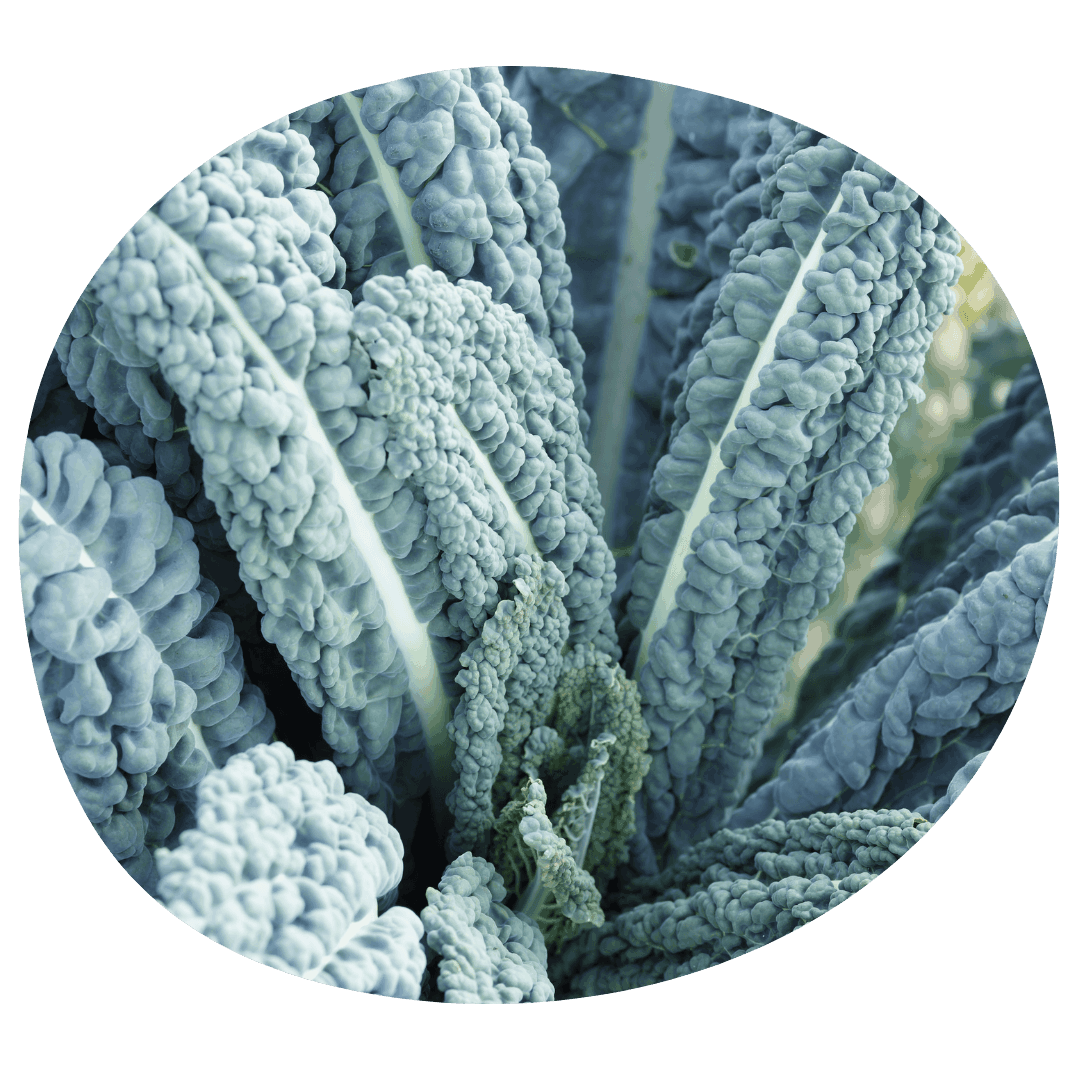How to Grow Kale
Growing Conditions
Kale is an extremely hardy vegetable, and mature plants are able to tolerate frost and even snow. It's easy to grow as long as it has nutrient-rich soil and part to full sun. As a cool season crop, kale does best in the spring and fall and can become bitter in hot weather.
Starting
Kale can be direct sown outdoors as soon as the ground can be worked in the spring and will germinate at temperatures as low as 4°C . Sow your kale at multiple intervals for successional harvests. Many compact varieties are suitable for growing in containers. Because of its cold tolerance, kale is a great option for fall harvesting and can even be grown in the winter under cover. Sow your seeds around 1/4-1/2" deep and space seeds around 1" apart. Rows should be spaced about 18-30" apart.
Find our full guide to seed starting here.

Care
Kale requires consistent watering and some supplemental fertilization, but otherwise is a low maintenance crop that requires little extra care throughout the growing season. It may be fertilized with a nitrogen-rich fertilizer, especially if leaves begin to look pale or yellow. Kale requires about 1 to 1 1/2" of water per week and may require supplemental watering during dry spells in the summer. Row covers and/or mulch can help retain moisture in the soil during hot weather. Keep your beds well weeded throughout the growing season. Kale is a biennial plant and will typically not bolt until its second year of growth.
Pests and Diseases
Aphids - Small green, black, or brown insects that feed on the sap of garden plants. You'll find them under leaves, at blossom tips, and in the joints of stems.
Cabbage Worms - Small green caterpillars that chew large holes in the leaves of brassica plants.
Flea Beetles - Small black beetles that feed on leaves and stems, leaving holes and discoloured patches.
Crop rotation, garden cleaning, and proper spacing between plants are the best ways to prevent problems caused by pests and diseases. Diatomaceous earth can be used to control crawling pest species, while sticky traps will catch flying pests. Row covers and insect netting can also prevent travelling pests from landing on your crops and causing damage. Ensure good drainage in your chosen planting spot to prevent problems with fungus and rot. Contact us for more specialized pest control methods such as beneficial nematodes.
Harvest
Kale typically requires around 60 days to reach maturity, but may be harvested early at baby leaf stage fora more tender texture Leave the terminal bud in the center of the plant when harvesting to maintain production. Late season kale will not suffer if exposed to frost and may even become sweeter afterwards. Kale stores well in the refrigerator for around one week.

